On April 9, 2015 we wrote an open article directed at “Dear _____(insert the name)_____ Church” in a blogpost titled “Passover or Easter Controversy”, wherein we discussed at length the etymology of the translation of the words “Easter” in the Authorised Version (KJV 1611) and “Passover” in the modern translations pertaining to Acts 12:4. We also directed the readers  to two articles dealing with the true etymology of Easter which were posted in September 2014 under the title “Correct Rendering of Easter at Acts 12:4” which can be read at these links Part 1 and Part 2. We do suggest that you read these preceding articles to gain the context from which this particular article is written.
to two articles dealing with the true etymology of Easter which were posted in September 2014 under the title “Correct Rendering of Easter at Acts 12:4” which can be read at these links Part 1 and Part 2. We do suggest that you read these preceding articles to gain the context from which this particular article is written.
As discussed online, and via an email to a local body of believers at LHBC where I once fellowshipped, writer pointed out the following pertaining to the celebration of “Good Friday” in 2015 in relation to the Jewish Passover, bearing in mind that the oracles of GOD were committed unto the Jew (Israel)(see Romans 3:2), yet the “Gentiles” make up their own ways as they deem fit! The quote read as follows concerning the date Easter was celebrated in 2015:
This “Good Friday” (3rd April 2015) was before the true Jewish Passover (Nisan 14) for 2015 which only took place at sunset on Saturday 4th April to sunset Sunday 5th April 2015 [the first day of the week] and therefore the resurrection would be three days and three nights later on Thursday 9th April 2015 [the fourth day of the week]! Just “celebrating ‘Good Friday’” as the day of the crucifixion would be in and of itself Roman Catholic! And this year “we” have failed to keep the Jewish feast! This is why we have a real drastic problem keeping days and feasts as we are warned in Galatians 4:9,10 ~
9 But now, after that ye have known God, or rather are known of God, how turn ye again to the weak and beggarly elements, whereunto ye desire again to be in bondage?
10 Ye observe days, and months, and times, and years. ~ Galatians 4:9,10
Do you desire again to be in bondage? The real problem actually comes into true contrast when we see how the modern denominational churches – including some “professing remnants” – will celebrate Easter/Resurrection Sunday in 2016! Now which date are you going to use for your church/celebration services? The Roman Catholic and protestant churches have “Good Friday” set down for Friday March 25, 2016 and “Easter/Resurrection Sunday” set down for Sunday March 27, 2016! However, about 2,000 years ago our Lord Jesus Christ was crucified at Passover  and the Jewish Passover in 2016 takes place from Nisan 14 (see Leviticus 23:5-8) in the Jewish calendar which equates to the secular calendar of the evening of Saturday April 23, 2016 and ends seven days later in the evening of Saturday April 30, 2016! There is about a month difference from the “Gentile celebration” preceding the actual celebration day and date of the Jewish Passover. So which day/date holds the more credence? Biblical truth? or man’s traditions and customs? This shows the disjointed ways of modern churchianity. However, the reason for the month’s difference which will escape many is that the Jewish calendar is also in a leap year, i.e. today, 20th of March, 2016 is 10th of Adar II, 5776. The chart hereunder reflects the first day of the Passover celebration which is the First day of unleavened bread proper (see Matthew 26:17ff; Mark 14:12ff; Luke 22:7ff):
and the Jewish Passover in 2016 takes place from Nisan 14 (see Leviticus 23:5-8) in the Jewish calendar which equates to the secular calendar of the evening of Saturday April 23, 2016 and ends seven days later in the evening of Saturday April 30, 2016! There is about a month difference from the “Gentile celebration” preceding the actual celebration day and date of the Jewish Passover. So which day/date holds the more credence? Biblical truth? or man’s traditions and customs? This shows the disjointed ways of modern churchianity. However, the reason for the month’s difference which will escape many is that the Jewish calendar is also in a leap year, i.e. today, 20th of March, 2016 is 10th of Adar II, 5776. The chart hereunder reflects the first day of the Passover celebration which is the First day of unleavened bread proper (see Matthew 26:17ff; Mark 14:12ff; Luke 22:7ff):
| YEAR | EASTER | PASSOVER* | DIFFERENCE |
| 2013 | Good Friday, March 29 – Sunday, March 31 | Evening of March 26 (Nisan 15, 5773) – evening of April 1 | Easter in the midst |
| 2014 | Good Friday, April 18 – Sunday, April 20 |
Evening of April 15 (Nisan 15, 5774) – evening of April 21 |
Easter in the midst |
| 2015 | Good Friday, April 3 – Sunday, April 5 |
Evening of April 4 (Nisan 15, 5775) – evening of April 10 |
Easter one day before |
| 2016 | Good Friday, March 25 – Sunday, March 27 | Evening of April 23 (Nisan 15, 5776) – evening of April 29 |
Easter one month before |
| 2017 | Good Friday, April 14 – Sunday, April 16 |
Evening of April 11 (Nisan 15, 5777) – evening of April 17 |
Easter in the midst |
* A date converter from the Gregorian calendar to the Hebrew calendar can be found at: www.hebcal.com/converter/
[The same unbiblical situation with secular feast days plays out every December 25th, too!]
 Brothers and sisters in Christ, our Lord Jesus Christ redeemed us from the curse of the law (Galatians 3:13) “Who also hath made us able ministers of the new testament; not of the letter [law], but of the spirit: for the letter killeth, but the spirit giveth life (2 Corinthians 3:6). Therefore, we are called to be of the same speech, of no divisions, perfectly joined together in the same mind and in the same judgment, and as there were contentions back in the first century so there are contentions even today which ought not to be so, as it is written:
Brothers and sisters in Christ, our Lord Jesus Christ redeemed us from the curse of the law (Galatians 3:13) “Who also hath made us able ministers of the new testament; not of the letter [law], but of the spirit: for the letter killeth, but the spirit giveth life (2 Corinthians 3:6). Therefore, we are called to be of the same speech, of no divisions, perfectly joined together in the same mind and in the same judgment, and as there were contentions back in the first century so there are contentions even today which ought not to be so, as it is written:
9 God is faithful, by whom ye were called unto the fellowship of his Son Jesus Christ our Lord.
10 Now I beseech you, brethren, by the name of our Lord Jesus Christ, that ye all speak the same thing, and that there be no divisions among you; but that ye be perfectly joined together in the same mind and in the same judgment.
11 For it hath been declared unto me of you, my brethren, by them which are of the house of Chloe, that there are contentions among you.
12 Now this I say, that every one of you saith, I am of Paul; and I of Apollos; and I of Cephas; and I of Christ.
13 Is Christ divided? was Paul crucified for you? or were ye baptized in the name of Paul? ~ 1 Corinthians 1:9-131 I therefore, the prisoner of the Lord, beseech you that ye walk worthy of the vocation wherewith ye are called,
2 With all lowliness and meekness, with longsuffering, forbearing one another in love;
3 Endeavouring to keep the unity of the Spirit in the bond of peace.
4 There is one body, and one Spirit, even as ye are called in one hope of your calling;
5 One Lord, one faith, one baptism,
6 One God and Father of all, who is above all, and through all, and in you all.
7 But unto every one of us is given grace according to the measure of the gift of Christ. ~ Ephesians 4:1-711 And he gave some, apostles; and some, prophets; and some, evangelists; and some, pastors and teachers;
12 For the perfecting of the saints, for the work of the ministry, for the edifying of the body of Christ:
13 Till we all come in the unity of the faith, and of the knowledge of the Son of God, unto a perfect man, unto the measure of the stature of the fulness of Christ:
14 That we henceforth be no more children, tossed to and fro, and carried about with every wind of doctrine, by the sleight of men, and cunning craftiness, whereby they lie in wait to deceive;
15 But speaking the truth in love, may grow up into him in all things, which is the head, even Christ:
16 From whom the whole body fitly joined together and compacted by that which every joint supplieth, according to the effectual working in the measure of every part, maketh increase of the body unto the edifying of itself in love. ~ Ephesians 4:11-16
Today’s churches appear so disjointed and divided from what we have just read from GOD’s Word, the Holy Scriptures that speak of our Lord of Glory Jesus Christ. How is it that there are so many different days kept for Christ, or teachings taught that are diametrically opposed to the unity in Christ and His disciples are  divided? Surely, the “His disciples are divided” statement would be an oxymoron? Right?
divided? Surely, the “His disciples are divided” statement would be an oxymoron? Right?
Then there are believers who proudly state that they are Calvinists or Arminianists or (fill in the blank) when we are to follow the Bible’s teachings of the apostles’ doctrine (see Acts 2:42). John Calvin and Jacobus Arminius and (fill in the blank) did not establish the foundation and authenticate the Gospel of our Lord Jesus Christ for you as the apostles and prophets of old did, for the “written works” of Calvin, Arminius, et al, are extra-biblical,
19 Now therefore ye are no more strangers and foreigners, but fellowcitizens with the saints, and of the household of God;
20 And are built upon the foundation of the apostles and prophets, Jesus Christ himself being the chief corner stone;
21 In whom all the building fitly framed together groweth unto an holy temple in the Lord:
22 In whom ye also are builded together for an habitation of God through the Spirit. ~ Ephesians 2:19-22
By way of another example: How can believers hold to “a pre-trib rapture”? “a mid-trib rapture”? and/or “a post-trib rapture”? and each holding to each of the respective teachings think their doctrine is correct! These are three different doctrines. Surely, if believers are abiding in Christ and have received the Holy Spirit of GOD, He, the Holy Spirit, does not divide by teaching diametrically opposed teachings?
33 For God is not the author of confusion, but of peace, as in all churches of the saints. ~ 1 Corinthians 14:33
Ekklesia of GOD, something is drastically amiss and in error! We can learn a valuable lesson from the apostle Paul. He said that if his eating meat would offend his brother he would abstain from it, as we read,
11 And through thy knowledge shall the weak brother perish, for whom Christ died?
12 But when ye sin so against the brethren, and wound their weak conscience, ye sin against Christ.
13 Wherefore, if meat make my brother to offend, I will eat no flesh while the world standeth, lest I make my brother to offend. ~ 1 Corinthians 8:11-13
If we are serious of being obedient to GOD’s commands, then we ought to keep His commandments and also lay down our lives for our brethren. It must cost us to be a true disciple of our Lord Jesus Christ! Sadly, what is playing out in modern churchianity is that there are teachings and celebrations that are done in lust and pride for one’s own gratification and teachings to make a name for oneself which is sinful and contrary to glorifying GOD. We are told by our Lord Jesus, for it is written,
24 God is a Spirit: and they that worship him must worship him in spirit and in truth. ~ John 4:24
If we are not in agreement, how can we be of the same Spirit and Truth? That is why our Lord protects us from sinful behaviour of having contentions amongst ourselves of observing days, and months, and times, and years and draws all of His born again disciples into unity when He gave command to remember His death through His instituted supper until He will come back, as we read, for it is written,
23 For I have received of the Lord that which also I delivered unto you, That the Lord Jesus the same night in which he was betrayed took bread:
24 And when he had given thanks, he brake it, and said, Take, eat: this is my body, which is broken for you: this do in remembrance of me.
25 After the same manner also he took the cup, when he had supped, saying, This cup is the new testament in my blood: this do ye, as oft as ye drink it, in remembrance of me.
26 For as often as ye eat this bread, and drink this cup, ye do shew the Lord’s death till he come. ~ 1 Corinthians 11:23-26 [my emphasis]
Some will hear and sadly others will neglect the Biblical instruction and continue on as they please: But, be warned, all must give an accounting to Christ Jesus . . .
Filed under: Doctrine, Easter, Passover | Tagged: Church, Crucifixion, Easter, Ekklesia, False Prophets, False Teachers, Feast of Unleavened Bread, God's Holy Word, Israel, Jacobus Arminius, Jesus Christ, Jews, John Calvin, Messiah, Passover, Protestantism, Roman Catholicism, Yeshua | 2 Comments »




















 After
After 
 Following on from the recent five part series titled “Pervert Translations and Publishers” which can be found here (please do read each part first if you have not already done so) –
Following on from the recent five part series titled “Pervert Translations and Publishers” which can be found here (please do read each part first if you have not already done so) – 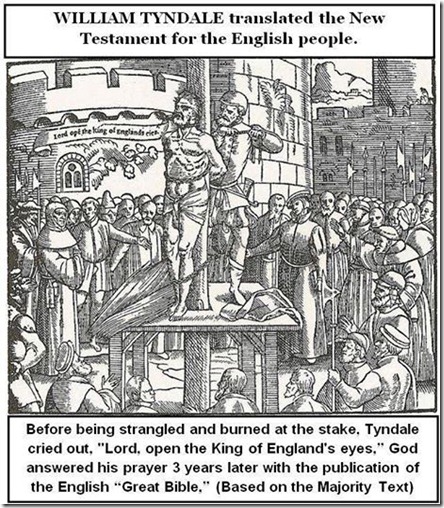 The 1611 Authorized King James Bible in English is the result of the preceding pioneers who stood against the papacy of the Roman Catholic church, and now for 403 years (1611-2014) the KJB has stood the test of time. We will be comparing the King James Bible against – “Today, the better English translations of the Hebrew and Greek Scriptures” according to Dr. John MacArthur at page xxi under subheading Transmission in The MacArthur Study Bible Updated Edition, which he lists as follows:
The 1611 Authorized King James Bible in English is the result of the preceding pioneers who stood against the papacy of the Roman Catholic church, and now for 403 years (1611-2014) the KJB has stood the test of time. We will be comparing the King James Bible against – “Today, the better English translations of the Hebrew and Greek Scriptures” according to Dr. John MacArthur at page xxi under subheading Transmission in The MacArthur Study Bible Updated Edition, which he lists as follows: The NASB uses the Greek Text, quote from page xxxi in the Foreword to The MacArthur Study Bible Updated Edition: “Consideration was given to the latest available manuscripts with a view to determining the best Greek text. In most instances the 26th edition of Eberhard Nestle’s NOVUM TESTAMENTUM GRAECE was followed.”
The NASB uses the Greek Text, quote from page xxxi in the Foreword to The MacArthur Study Bible Updated Edition: “Consideration was given to the latest available manuscripts with a view to determining the best Greek text. In most instances the 26th edition of Eberhard Nestle’s NOVUM TESTAMENTUM GRAECE was followed.”
 This blog posting which follows on from Part 1, will deal with two videos that reveal the correct teaching pertaining to Easter being included in Acts 12:4 as opposed to Passover. Each video will also have a link to the text of each video for your study purposes.
This blog posting which follows on from Part 1, will deal with two videos that reveal the correct teaching pertaining to Easter being included in Acts 12:4 as opposed to Passover. Each video will also have a link to the text of each video for your study purposes.


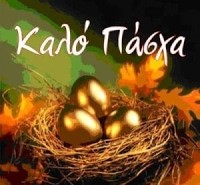 Eggs and bunnies are fertility symbols and as such they can be considered pagan symbols. When Christians brought the celebration of the Lord’s resurrection to pagan nations, these symbols of spring became associated with the Christian celebration of Easter which happens in spring. Spring fertility festivals have ancient origins, and some of their practices are described in the Bible in passages such as Ezekiel 8:14-16 and Jeremiah 7:18 & 44:17-19. There are Christians today who avoid using the word “Easter” for fear that it necessarily refers to these pagan symbols and practices. However, the fact that our culture has come to associate fertility symbols with the name “Easter” does not mean that “Easter” itself is pagan. As with the word “Easter”, even the Greek word “Pascha” has become associated with pagan fertility symbols in present day Greece because “Pascha” is the Greek word for “Easter” (this will be explained in the next section of this article). Yet nobody in his right mind would advise Christians against using the word “Pascha”. Somehow the prejudice against the word “Easter” has become so strong among some Christians that logic no longer holds sway. Guilt by association is a logical fallacy. Moreover this logical fallacy is not applied consistently towards the word “Pascha”. Christians would be wise to purge Easter of its pagan symbols, but the word “Easter” itself remains a biblical word.
Eggs and bunnies are fertility symbols and as such they can be considered pagan symbols. When Christians brought the celebration of the Lord’s resurrection to pagan nations, these symbols of spring became associated with the Christian celebration of Easter which happens in spring. Spring fertility festivals have ancient origins, and some of their practices are described in the Bible in passages such as Ezekiel 8:14-16 and Jeremiah 7:18 & 44:17-19. There are Christians today who avoid using the word “Easter” for fear that it necessarily refers to these pagan symbols and practices. However, the fact that our culture has come to associate fertility symbols with the name “Easter” does not mean that “Easter” itself is pagan. As with the word “Easter”, even the Greek word “Pascha” has become associated with pagan fertility symbols in present day Greece because “Pascha” is the Greek word for “Easter” (this will be explained in the next section of this article). Yet nobody in his right mind would advise Christians against using the word “Pascha”. Somehow the prejudice against the word “Easter” has become so strong among some Christians that logic no longer holds sway. Guilt by association is a logical fallacy. Moreover this logical fallacy is not applied consistently towards the word “Pascha”. Christians would be wise to purge Easter of its pagan symbols, but the word “Easter” itself remains a biblical word.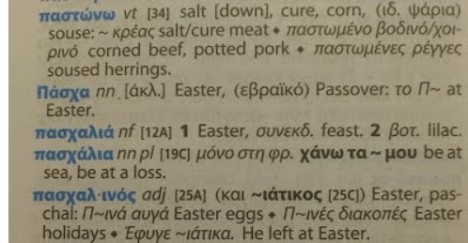
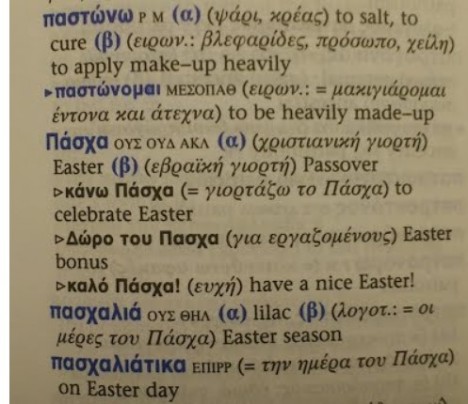
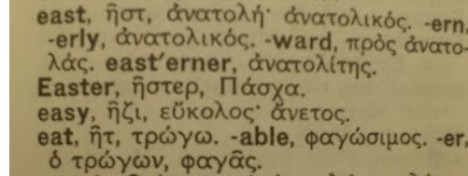
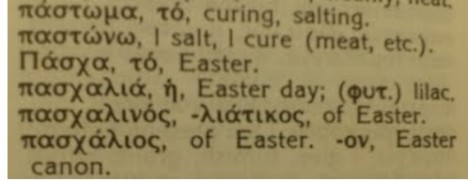
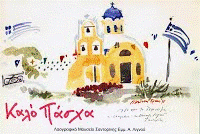
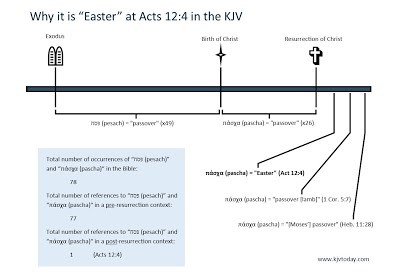
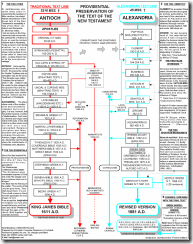

 Thomas Nelson Publishers (publishers of the NKJV) claim, on the inside-cover, the symbol, “… is an ancient symbol for the Trinity.” But Acts 17:29, clearly FORBIDS such symbology: “… we ought NOT to think that the Godhead is like unto gold, or silver, or stone, GRAVEN BY ART and man’s device.”
Thomas Nelson Publishers (publishers of the NKJV) claim, on the inside-cover, the symbol, “… is an ancient symbol for the Trinity.” But Acts 17:29, clearly FORBIDS such symbology: “… we ought NOT to think that the Godhead is like unto gold, or silver, or stone, GRAVEN BY ART and man’s device.”  And why does The Aquarian Conspiracy, a key New Age “handbook”, bear a similar symbol? New Agers freely admit it represents three inter-woven “6”s or “666”.
And why does The Aquarian Conspiracy, a key New Age “handbook”, bear a similar symbol? New Agers freely admit it represents three inter-woven “6”s or “666”.  The three esoteric “6”‘s separated.
The three esoteric “6”‘s separated. Transpersonal Psychology (ITP). The ITP is a new age school following the Jungian Psychology [occultist Carl Jung]. One of their stated goals is “… to reach the recognition of divinity within” (www.itp.edu/about/tp.html) (see Genesis 3:5, “…ye shall be as gods …”)
Transpersonal Psychology (ITP). The ITP is a new age school following the Jungian Psychology [occultist Carl Jung]. One of their stated goals is “… to reach the recognition of divinity within” (www.itp.edu/about/tp.html) (see Genesis 3:5, “…ye shall be as gods …”)  The same symbol (with a circle) is displayed by the rock group Led Zeppelin. Members of Led Zeppelin are deeply involved in satanism and the occult. Guitarist Jimmy Page, so consumed with satanism, actually purchased satanist Aleister Crowley’s mansion. Most believe the symbol is from the teachings of Aleister Crowley and represents 666.
The same symbol (with a circle) is displayed by the rock group Led Zeppelin. Members of Led Zeppelin are deeply involved in satanism and the occult. Guitarist Jimmy Page, so consumed with satanism, actually purchased satanist Aleister Crowley’s mansion. Most believe the symbol is from the teachings of Aleister Crowley and represents 666.  The following picture is “The Hierophant” taken from the Tarot card set designed by satanist Aliester Crowley. The “Hierophant” is a priest in the occult and Eleusinian. Notice the “three circles” at the top of the wand or rod in the Hierphant’s hand. Inside the the three intertwined circles is the “NKJV symbol”.
The following picture is “The Hierophant” taken from the Tarot card set designed by satanist Aliester Crowley. The “Hierophant” is a priest in the occult and Eleusinian. Notice the “three circles” at the top of the wand or rod in the Hierphant’s hand. Inside the the three intertwined circles is the “NKJV symbol”.  To the left is the top of the wand enlarged. Notice the “NKJV symbol” (upside down) inside the three circles.
To the left is the top of the wand enlarged. Notice the “NKJV symbol” (upside down) inside the three circles.  One of the most occultic television shows ever aired is “Charmed”. “Charmed” details the spells and occultic practices of three witches. The “NKJV symbol” is the show’s primary symbol of witchcraft and is splattered throughout the series. Notice the “NKJV symbol” displayed on “The Book of Shadows”. The Book of Shadows is commonly used in witchcraft and satanism:
One of the most occultic television shows ever aired is “Charmed”. “Charmed” details the spells and occultic practices of three witches. The “NKJV symbol” is the show’s primary symbol of witchcraft and is splattered throughout the series. Notice the “NKJV symbol” displayed on “The Book of Shadows”. The Book of Shadows is commonly used in witchcraft and satanism: 
 Here’s some examples of Satanic and Pagan Jewellery which includes the NKJV logo.
Here’s some examples of Satanic and Pagan Jewellery which includes the NKJV logo.
 LEFT: The image on the left is from the rock group Deicide’s album “Once Upon the Cross”. It is a triquetra (the NKJV logo) with pentagrams and upside down crosses. The group Deicide members are very serious Satanists. Lead Singer Glen Benton has an upside down cross branded on his forehead. The inside cover of the album “Once Upon the Cross” has the Lord Jesus Christ, sliced up the middle, with his insides removed. The name Deicide means the death of God.
LEFT: The image on the left is from the rock group Deicide’s album “Once Upon the Cross”. It is a triquetra (the NKJV logo) with pentagrams and upside down crosses. The group Deicide members are very serious Satanists. Lead Singer Glen Benton has an upside down cross branded on his forehead. The inside cover of the album “Once Upon the Cross” has the Lord Jesus Christ, sliced up the middle, with his insides removed. The name Deicide means the death of God.  RIGHT: The triquetra (the NKJV logo) is also the logo for the Rap / Metal band P.O.D.
RIGHT: The triquetra (the NKJV logo) is also the logo for the Rap / Metal band P.O.D. 
 Joshua Project
Joshua Project The Biblical Basis of Missions
The Biblical Basis of Missions

![The Biblical Nativity (Birth) of our Lord Jesus Christ according to the Holy Scriptures in the Gospel of Luke 1 & 2 [see Purge the leaven … blog post] The Nativity of our Lord Jesus Christ ~ Luke 1 & 2 The Biblical Nativity (Birth) of our Lord Jesus Christ according to the Holy Scriptures in the Gospel of Luke 1 & 2 [see Purge the leaven … blog post]](https://luke923evangelism.files.wordpress.com/2012/12/birth-of-christ-e1374168223523.png)



